Introduction

The Voigtländer 58mm 1.4 SL IIs Nokton has been in production since 2007 and gathered many fans over the years. This is probably the reason Cosina updated its casing design several times throughout the years while keeping the optics the same. Let’s see if we can find out what people like about it in this review.
Sample Images

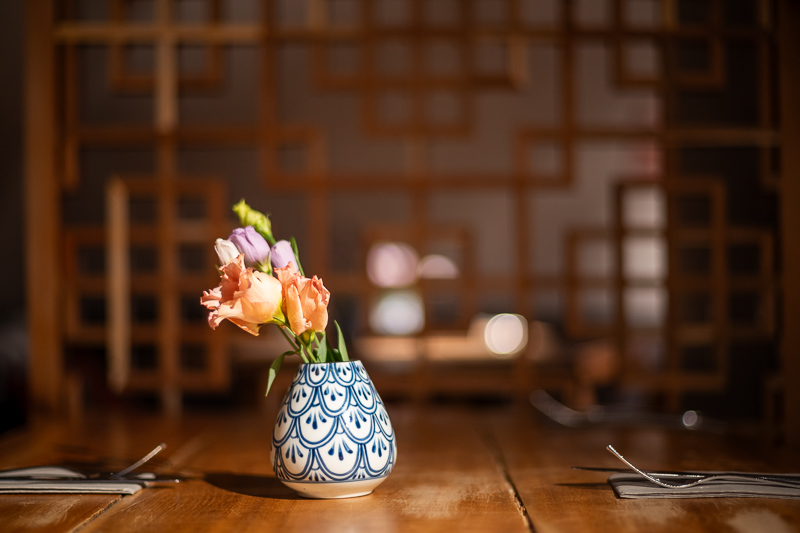




Most of the sample images in this review can be found in full resolution here.
Contents
Specifications / Version History
In 2007 Cosina released their SLR 58mm 1.4 for the first time for Nikon F and Pentax K mount. In 2012 they updated the casing design and removed the Pentax K option. In 2017 they updated the casing design once more – to resemble the style of old manual focus Nikon lenses – and they also reduced the filter size from 58 mm to the typical 52 mm. All the lenses feature the same optical design. This is a review of the latest 2017 version which has the following specifications:
- Diameter: 68 mm
- Length: 46 mm
- Weight: 315g (measured)
- Field of view: 40° (diagonally)
- Filter Diameter: 52 mm
- Number of Aperture Blades: 9 (rounded)
- Elements/Groups: 7/6

- Close Focusing Distance: 0.45 m
- Maximum Magnification: 1:5.9 (measured)
- Mount: Nikon F
buy from Amazon.de | B&H | ebay.com | ebay.de (affiliate links) for $549/579€ or find your local Voigtländer distributor
Handling / Build Quality

The design of the Voigtländer SL lenses has undergone several changes over the years. In 2017 Cosina updated the design of the whole line up and it closely resembles that of old Nikon lenses now. They have a sprocket on the aperture ring, colorful markings and all but the 55mm 1.2 also feature a silver ring with DoF markings.
The casing feels like it is an all metal design, all the writings are engraved and filled with paint.
The focus ring has a nice and even but slightly soft resistance. It has a long focus throw as it takes 270° from the minimum focus distance of 0.45 m to infinity and it turns “the Nikon way”.
The aperture ring is pretty much the same as on Nikon’s lenses as well: equidistantly spaced full-stop click stops and located close to the camera body.
Cosina sells a screw-in hood for this lens which is called LH-58s. I did not buy one, so I cannot tell you anything about it.

The Voigtländer 58mm 1.4 SL IIs Nokton and 55mm 1.2 SL IIs Nokton are very similar in size. The 58mm has a shorter focus ring but the total length is very similar. Like most of the old Nikon manual focus lenses all the Voigtländer SL IIs lenses feature the typical 52 mm filter thread size.

The lens does feature electronic contacts to communicate with the modern Nikon cameras.
Vignetting
Light falloff

| f/1.4 | 2.6 EV |
| f/2.0 | 2.1 EV |
| f/2.8 | 1.1 EV |
| f/4.0 | 0.5 EV |
| f/5.6 - f/16 | 0.3 EV |
After having used the Nikon 55mm 1.2 Ai and the newer Voigtländer 55mm 1.2 SL IIs Nokton these vignetting figures are pretty much what I expected.
At f/2.0 this 58mm lens shows about half a stop more vignetting in the corners than the other two lenses (which are stopped down more at f/2.0) whereas the vignetting is the same at all other aperture settings within the margin of error.

It is recommended to have a look at this article first to get an idea how this brightness graph works.
Optical vignetting
Fast lenses usually show a noticeable amount of optical vignetting, especially so the compact ones. Without going too much into technical details optical vignetting leads to the truncation of light circles towards the borders of the frame.
In the center of the frame almost every lens will render a perfect circle, but only lenses with very low optical vignetting will keep this shape in the corners.
So in the following comparison we move from the center (left) to the extreme corner (right) and see how the shape of the light circle changes.
Because of their different focal lengths we cannot directly compare the size of the light circles. We do see that the amount of optical vignetting is very much comparable though.
Interestingly the circles in the center of the frame are very much comparable in size when both lenses are set to f/1.4 yet there is a big difference with both lenses set to f/2.0. I have no explanation for this other than the stops not being exactly accurate on one of the lenses and my bet here is on this 58mm 1.4, as I did not encounter such differences when comparing the Voigtländer 55mm 1.2 Nokton SL IIs to the Nikon 55mm 1.2 Ai.
Nikon’s 50-58mm f/1.2 lenses either use 7 or 9 straight blades. I am quite happy Cosina decided to go with 9 rounded blades for both theses lenses, leading to way more pleasing out of focus highlights when the lens is slightly stopped down.
Featuring an all-spherical design we do not encounter any onion ring structures here.
Sharpness
Focus shift
33% crops, Sony A7rII
As this 58mm 1.4’s optical design is very similar to the Nikon 55mm 1.2 Ai and the Voigtländer 55mm 1.2 SL IIs I expected to see some focus shift here as well. Out these three lenses this 58mm shows the lowest amount and I actually think it is so low that it shouldn’t cause any issues in the field, but if you look closely it is there.
Infinity (42mp Sony A7rII)

Just like the Voigtländer 55mm 1.2 SL IIs, this 58mm 1.4 uses an all spherical double gauss design. The f/1.2 lens is soft at f/1.2 to f/1.4, does this 58mm manage to do better?
Also here stopping down to f/2.0 or better f/2.8 increases the contrast significantly, but at f/1.4 it does surely look better than the newer Voigtländer 55mm 1.2 SL IIs at either, f/1.2 or f/1.4, as here there is less glow (spherical aberration) and also less color aberrations.
The 55mm 1.2 Nokton needed to be stopped down to f/11 for decent across frame sharpness and the corners still didn’t look particularly great. Here the situation is a bit better, as the corners look good from f/8.0.
Portrait 1.5 m (42mp Sony A7rII)
For portraiture it isn’t so important how flat the field is, it is more interesting to see what the sharpness is like when focused at different parts of the frame to take field curvature out of the equation.

We will be looking at 100% crops from the 42mp Sony A7rII.
f/1.4 <—> f/2.0
This Voigtländer 58mm 1.4 shows a good performance in this category. It does not have super high contrast at f/1.4 like a modern lens with a more complex optical design, but for portraits this is more than sufficient – even with the subject located in the outer midframe area.
Here the Voigtländer 55mm 1.2 SL IIs and also the Nikon 55mm 1.2 Ai look definitely worse at f/1.2 and also at f/1.4, due to having more color aberrations and being less contrasty. This is also why I would rate this 58mm 1.4 being the easiest to focus out of these three.
Close 0.45 m, 1:5.9 (42mp Sony A7rII)
The performance in this category is indistinguishable from the newer Voigtländer 55mm 1.2 SL IIs Nokton, which means f/1.4 is very soft, f/2.0 still soft, f/2.8 almost good and from f/4.0 actually very contrasty.
Flare resistance

Most of the fast modern Voigtländer lenses perform very well here, but this time that doesn’t really seem to be the case.
At the maximum aperture, when there is a strong point light source in the frame, huge obtrusive ghosts can easily appear. As these occur with the sun inside the frame a hood would have not made any difference here.
Stopping down often helps to get rid of these artefacts, as can be seen from the comparison it does improve the situations, but that odd ring artefact is still there at f/2.8.
Also stopped down to f/11 a lot of huge ghosts in combination with veiling flare can appear.
Unlike many other Voigtländer lenses you don’t have to push this one a lot to show such artefacts.
The newer Voigtländer 55mm 1.2 SL IIs does better in this category and the Voigtländer 50mm 1.2 for mirrorless cameras does a lot better.
Coma
100% crops from extreme corner, focused on center, Sony A7rII
The optical design of this 58mm 1.4 is very similar to the Voigtländer 55mm 1.2 SL IIs Nokton, which showed massive Coma at wider apertures. Now we cannot call this lens well corrected either, but it does show significantly smaller artefacts at f/1.4. Between f/2.0 and f/5.6 both lenses perform very similar, but this 58mm does look very good in the corners from f/5.6, whereas the f/1.2 lens always struggles in the extreme corners.
Distortion
This Voigtländer 58mm 1.4 shows a low amount of barrel distortion – similar to the newer 55mm 1.2. A correction profile in Lightroom/Photoshop is available and it does a very good job as can be seen from the comparison above.
Bokeh

This 58mm 1.4 Nokton features a classic all-spherical double gauss design, so we should not expect smooth bokeh straight from the maximum aperture, as we are used to from the Nokton lenses for M-mount or E-mount that feature aspherical elements (e.g. the 50mm 1.5 II, 50mm 1.2 or 50mm 1.0).
Therefore this is one of those lenses where changing the aperture setting has a big influence on the quality of the bokeh – not just the quantity – as can be seen from the comparison above.
As was to be expected (if you paid attention in the optical vignetting section): the dfference between f/1.4 and f/2.0 is only visible in the central part of the frame due to the high vignetting. Stopping down to f/2.8 makes a big difference everywhere in the frame and leads to noticeably calmer bokeh though.




At close distances with the lens set to f/1.4 there obviously is a high amount of blur and the backgrounds are generally rendered in a smooth way.

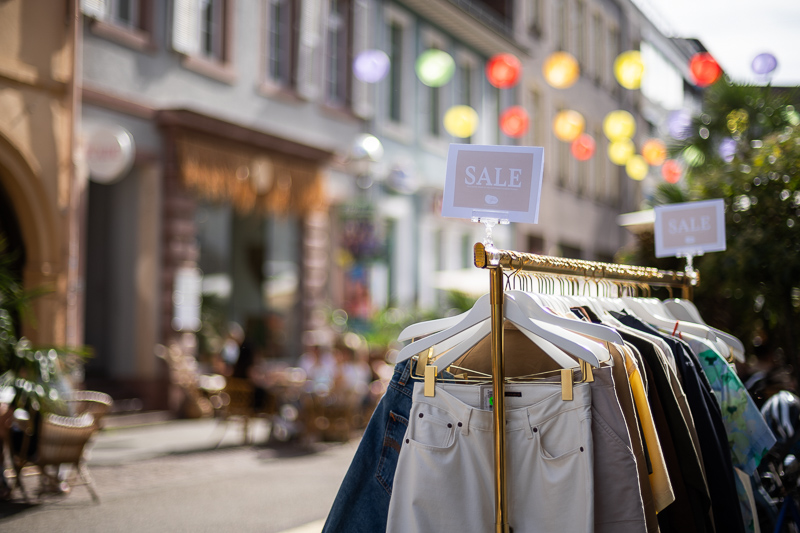


At mid distances structured backgrounds can lead to noticeably busier rendering with a lot of double edged structures. As shown before you can get rid of those by stopping down to f/2.8.






Unsurprisingly this trend continues at longer focus distances. It surely helps to pay some attention to what your background looks like and what aperture setting you are using to get the results you want.
This is definitely a lens for those that are looking for some character and are bored by today’s “clinically clean”, more complex high performance lenses.
Sunstars
For most of their lenses Cosina is using either 10 or 12 straight aperture blades leading to distinct sunstars – even when the lens is only slightly stopped down.
For all their current SL lenses for F-mount they decided to go for 9 rounded aperture blades though. As I have already shown you before this is good news for the bokeh when the lens is slightly stopped down, but it also leads to less distinct suntars. From f/8.0 to f/16 they still look decent, but in a direct comparison I would prefer the sample of the Nokton 55mm 1.2 SL IIs I had, as that one created rays with more even lengths.
As was already the case for the Nokton 55mm 1.2 SL IIs, also here purple halos at f/1.4 tell me there is strong undercorrected spherical aberration at the maximum aperture.
If you want to know more about the sunstar rendering of different lenses have a look at this article.
Chromatic aberration
Lateral
There are almost no lateral CA visible so I have nothing I could show you here.
Longitudinal
Bokeh fringing is visible but I consider the amount average for a lens with these specifications. The half a stop faster Voigtländer 55mm 1.2 performed slightly worse at f/1.4.
When it comes to purple fringing I think the 55mm 1.2 looks slightly better at f/1.4. Both lenses look good from f/2.0.
Conclusion
good
|
average
|
not good
|
The Voigtländer 58mm 1.4 Nokton SL IIs has many fans and as is often the case when a lens has many fans, that is because of some distinctive qualities. In this case those qualities are the classic bokeh rendering in combination with the good sharpness at portrait distances in a nicely made, compact package.
I tried and compared the Nikon 55mm 1.2 Ai, the latest Voigtländer 55mm 1.2 SL IIs Nokton and this Voigtländer 58mm 1.4 SL IIs Nokton. All these lenses have a very similar rendering, so why should you pick this 58mm lens with the less cool f/1.4 aperture? It is definitely sharper at f/1.4 than the other two at either – f/1.2 or f/1.4 – which also makes it the easiest to focus. If you are not into that “vintage glow” (undercorrected spherical aberration) at f/1.2 to f/1.4, this 58mm is also the lens you should pick, as it is better corrected than the two f/1.2 lenses. It is also the cheapest, most compact and lightest of the three.
PS: If you are also okay with the casing design of the older generations of this lens (or you actually prefer them), you can find those cheaper on the used market and save some bucks.
buy from Amazon.de | B&H | ebay.com | ebay.de (affiliate links) for $549/579€ or find your local Voigtländer distributor
Alternatives
I reviewed a lot of fast 50mm lenses but most of them have been M-mount lenses. I also did a Comparison of Super Fast 50mm M-mount Lenses that might be worth a look.
We also have a Guide on 50mm Lenses that can be used on E-mount cameras (most of them also on other mirrorless cameras) that will give you a good overview.
A few alternatives might be worth talking about in more detail though:
Voigtländer 55mm 1.2 SL IIs Nokton:
Voigtländer’s latest SL lens. I was a bit surprised to see them making a 55mm 1.2 when there already is this 58mm 1.4. Nevertheless, obviously f/1.2 is faster than f/1.4, but there are some compromises connected to it: the 55mm is softer at f/1.2 to f/1.4 and has a distinct glow at these apertures as well. If you like and want that you will prefer the newer 55mm, if not this 58mm is the better choice.
buy from Amazon.com | B&H | ebay.com | ebay.de (affiliate links) for $699/649€ or find your local Voigtländer distributor
Nikon 55mm 1.2:
A true vintage lens with straight aperture blades, more lens flares and strong glow at f/1.2.
buy from ebay.com | ebay.de (affiliate links) starting at $300
Nikon 50mm 1.2 Ai(-s):
I only used this lens shortly. From my memories, compared to the aforementioned Nikon 55mm 1.2, it performs similar at f/1.2 to f/1.4 but better at infinity slightly stopped down. The Ai-s version of this 50mm also features 9 aperture blades, but they are not really rounded. For roughly the same price I would personally prefer this 58mm 1.4 Voigtländer, but 50mm and 58mm are already different enough to stir the decision.
buy from ebay.com | ebay.de (affiliate links) starting at $400
Nikon 58mm 1.2 Noct Ai(-s):
Thanks to its hand ground aspherical element this 58mm corrects coma much better than the two aforementioned other Nikon f/1.2 lenses and also than this Voigtländer 58mm 1.4 SL IIs. Collectors have driven up the price of this one to completely absurd levels. You don’t pay for its great performance, only for its rarity. And it isn’t even that rare.
I still hope I get the chance to one day review one of these to demystify it.
buy from ebay.com | ebay.de (affiliate links) starting at $3000
Sample Images







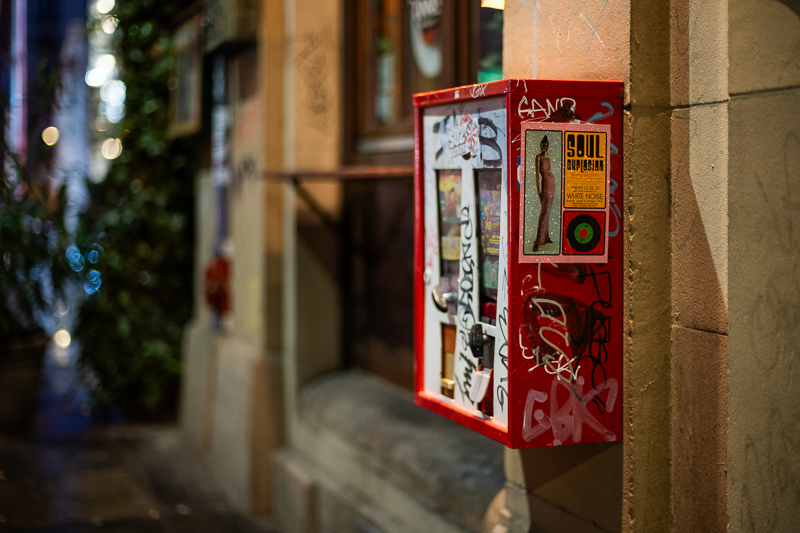









Most of the sample images in this review can be found in full resolution here.
Further Reading
- All Lens Reviews
- All Voigtländer Reviews
- Analogue Adventures Landing Page
- Review: Zhong Yi 50mm 0.95 III
- Lens Aberrations explained
- Discuss this review on our Discord server
Support Us
Did you find this article useful or just liked reading it? Treat us to a coffee!
This site contains affiliate links. If you make a purchase using any of the links marked as affiliate links, I may receive a small commission at no additional cost to you. This helps support the creation of future content.
Latest posts by BastianK (see all)
- Review: Thypoch 21mm 1.4 Simera - July 12, 2025
- Review: SLRmagic 50mm 0.95 Hyperprime LM - July 5, 2025
- Full Resolution Pictures getting fixed - July 4, 2025





















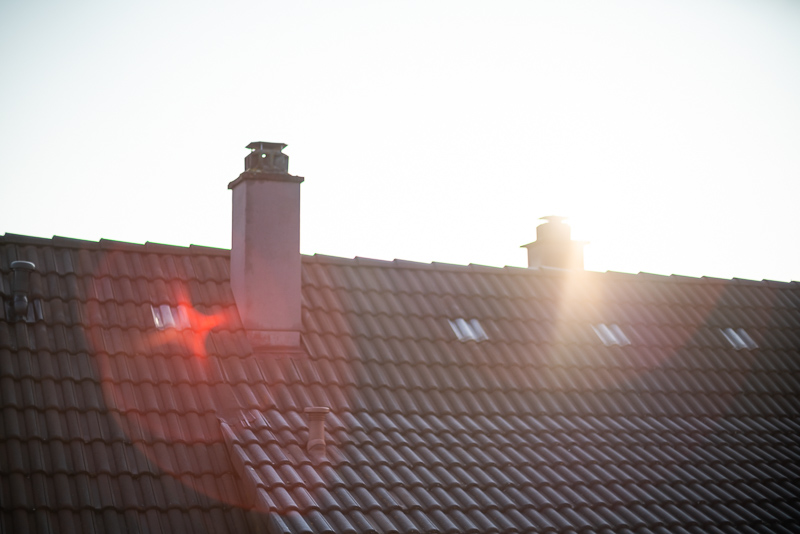













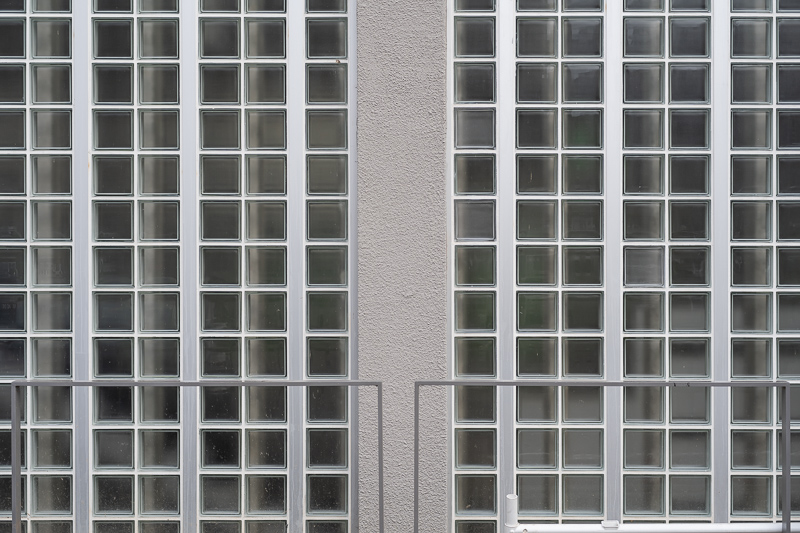






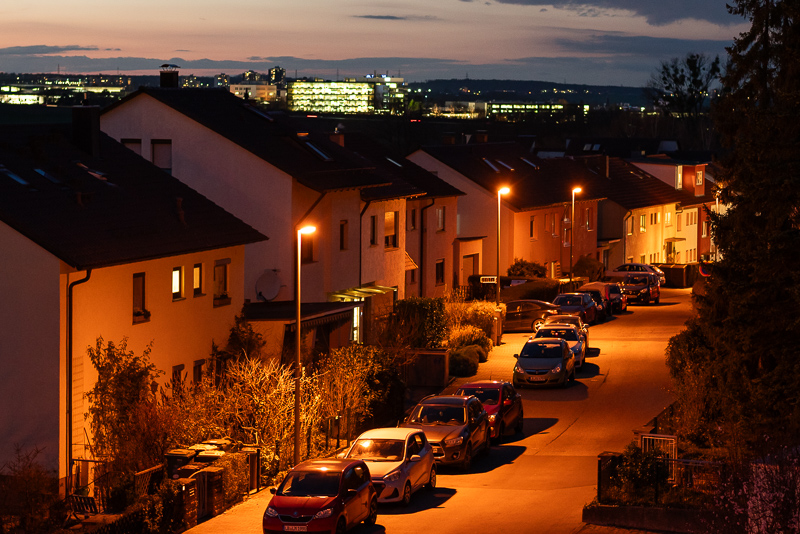










Lovely lens and wonderful review. Amazing character as perhaps expected.
Looks like the little one is doing well too! Good to see!
Thanks. Another great review of a lens I will never sell. I own the earlier version of the Voigtländer 58mm f1.4 with the Pentax mount, but I use it with the Sony A7R-IV. Every time I’m going to shoot portraits only I put it in my bag and take some pictures as kind of a superfluent addition. But I can bet the photos which I took with this lens get choosed.
Lovely bokeh and with a certain charakter in focus it is not beatable by modern lenses. It is somehow inbetween: perfect mechanics, very good optical quality but not perfect. Yes, you need extra time at a shooting because it is a manual lens, but it is worth every extra minute.
It’s an interesting lens, in a way that some vintage lenses are. Based on both the sample images and my own expectations (haven’t tried this one), I imagine I’d sometimes be glad to have this lens mounted on my camera, and sometimes wish it was something else (when I have to stop it down just to smooth things over, in those cases when lens’ character seems rather malevolent). But this is part of the game, and I’m sure most buyers are well aware of this.
The interesting question is how many people would be happy(ier) with a vintage lens of similar design, if nothing else because of the price (albeit most would have somewhat poorer performance wide open).
Another great review imho, with all specific characteristics well presented. It should really help potential buyers realize what they are getting into, relative to say Voigt 50mm F1.2 or the likes of it, for me it was a fine, informative entertainment. Based on all I’ve seen so far, I think I’d prefer the F1.5 one for the busy bokeh purposes.
P.S. I suppose congratulations are in order as well. 🙂
I’ve had my Voightlander 58mm f/1.4 for several years and still prefer it to any “normal-ish” Nikon lens, from the manual focus to autofocus vintages. my experience is probably skewed by the fact that I use this lens on the modest resolution D700, which gives me a terrific rendering.
I have never done any scientific testing or examination of charts, only real world subjects in a three dimensional environment. I can’t say that vignetting has ever been a negative factor in actual photography. I did buy the matching Voightlander hood which keeps oblique light off the front element and while a bit costly is very nicely designed and comes with a matching slip-on cap that makes for a very secure package.
FWIW… My most used lens has shifted from the 58mm to the latest interation of the Voightlander 40mm f/2, which matches the exterior cosmetics of the 58mm and is nearly perfect for an EDC lens. It might be worth a look for those that like something a bit wider.
I dislike its rendering, haziness, purple fringing, and ugly bokeh. I don’t like its protruding rabbit ears either. Honestly, its low sharpness doesn’t even make it into the top 5 reasons why I don’t like this lens. Gladly I bought used and sold it with no loss.
Did I miss something ? You not even mentioning that this lens was a copy as a tribute for the Topcor RE 58mm 1.4 from 1963 !
It’s well know the Cosina Director loved this lens so much he asked Topcon the permission to redo it !
It’s still remain some difference though, not only esthetically. originally the tread size was 62mm
Well known, huh?
Is there any actual source to back that claim up?
https://www.heise.de/news/Voigtlaender-Nokton-1-4-58-mm-SL-II-S-mit-Nikon-Bajonett-3457962.html (in German), second to last sentence.
Quote from lens-db’s entry for the CV Nokton 58mm f/1.4 (https://lens-db.com/cosina-voigtlander-nokton-58mm-f14-sl-ii-2007/):
“From the editor
The Auto-Topcor 58mm F/1.4 made by Cosina in 2003 with the limited production batch of 1600 copies soon became popular at Japanese market due to its high image quality, so Cosina decided to start the mass production of that lens under the Voigtlander Nokton 58mm F/1.4 SL II name.”
Quote from lens-db’s entry for the Cosina Tokyo Kogaku Auto-Topcor 58mm F/1.4 (https://lens-db.com/cosina-tokyo-kogaku-auto-topcor-58mm-f14-2003/):
“From the editor
The lens was produced in 2003 by Cosina in the limited number of units: 800 with M42 thread mount and 800 with Nikon F mount. Optically the lens differs from the original RE. Auto-Topcor 58mm F/1.4 lens made by Tokyo Kogaku Kikai K.K.
Mass production of this model was carried as the Voigtlander Nokton 58mm F/1.4 SL II. Optically both Cosina-made lenses are identical.”
Original Tokyo Kogaku RE. Auto-Topcor 58mm F/1.4 design:
https://lens-db.com/tokyo-kogaku-re-auto-topcor-58mm-f14-1963/
Sorry to say that, but the original Topcor RE 1,4/58mm had a lens structure containing 7 lenses in 5 groups, while the later “Topcor” which was made by Cosina was made with 7 lenses in 6 groups. The doublet before the aperture blades was then split into two single lenses. So this two lenses do not share the same optical formula.
It’s highly inspired by the legendary Topcor 58/1.4 from 1963, but I believe the second and third elements are different from the original formula. Tokyo Optics still proudly allowed Cosina to use their name on the limited 2007 edition, which later became the Voigtlander 58/1.4.
It’d be great to see both the original Topcon RE. Auto-Topcor and the Voigtländer tested using Bastian’s excellent methodology.
There have been a test posted at the MFLenses forum few years ago. Surprisingly, it pointed to the original Topcor having a slight edge @f/1.4, IIRC.
PS: Both 58mm Topcors are a lovely piece of tech!
Yes very similar design, differ just in last two elements wich was a group in the original.
Both overratated, mabybe the update version with better coatings… but no there are so many good lenses.
I really hate those two, ok maybe black and white, but the 50 1.2 surpasses in every aspect those two so much.
I
Owned one of this, rubber ring version, always vintage colors, difficult w.b. (a7III)and never loved in the end not a keeper, I bought it because the hype around it in 2017.
Same story for the Mr Ding, but I didn’t sell it, yet.
Happy to see nothing can beat the Nokton 1.2 m, good WO, great stopped down and beautiful for landscapes, even the m on sony.
I can’t be bothered to consider colours when buying lenses. I simply learn how to balance them out with a few quick tweaks (since I’m not a film or jpeg shooter). I can almost never depend on auto WB anyway, especially with scenes with dominating colours (like forests, golden hour moments etc.).
Some lenses are more pleasant to work with, even when it comes to processing files, but it’s usually really easily manageable (by moving a few sliders slightly, and/or touching RGB curves etc.).
In any case, “vintage colours” are to be expected from a lens that is practically a vintage lens made decades later. As for Chinese lenses, they do often have weak coatings with a yellowish tint or whatever. When I tried the TTArtisan 100mm (“Trioplan”), I simply changed a couple of values in Camera Raw (calibration in this case), and it looked how I wanted it to be.
The barrel design looks so vintage, just like the nikkor lenses from early 60s
Thank you for this review! It’s very interesting to see how in these 60-years-old designs an extra 1/3-1/2 EV of speed leads to decreased sharpness at comparable apertures, I’m talking about F1.4 and F1.2 versions. And you won’t even notice this speed gain in real world shooting… Meanwhile, F1.2 versions are bulkier and more expensive.
BTW, it looks like you’ve missed an obvious alternative – the original Nikkor-S 50mm F1.4 and its predecessor Nikkor-S 58mm F1.4. The former one was reviewed on this website previously. It’s dirt cheap and very common lens.
Love this little lens, I love the colors and tones it renders. It has its limitations for sure, but it’s one of the lenses I’ll never sell. If you know how to use it, it can take some really phenomenal photos. This is especially true for portraiture. I love the focal length too. It’s like having a 50mm and an 85mm in one lens
More than 10 years waiting this review.
Rubber ring cersion is softer wo I think and laca plagued even at 2.8.
Never liked it, and under auto white balance i got strange values and vintage colors.
Paintellery is not mu vibe, at all.